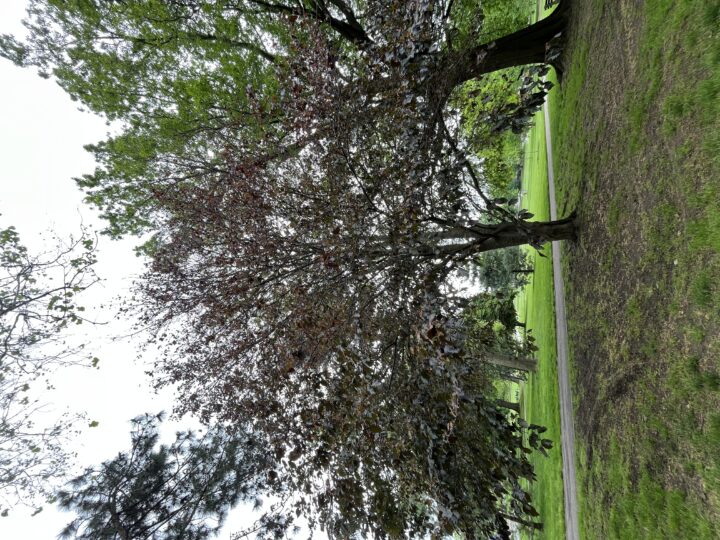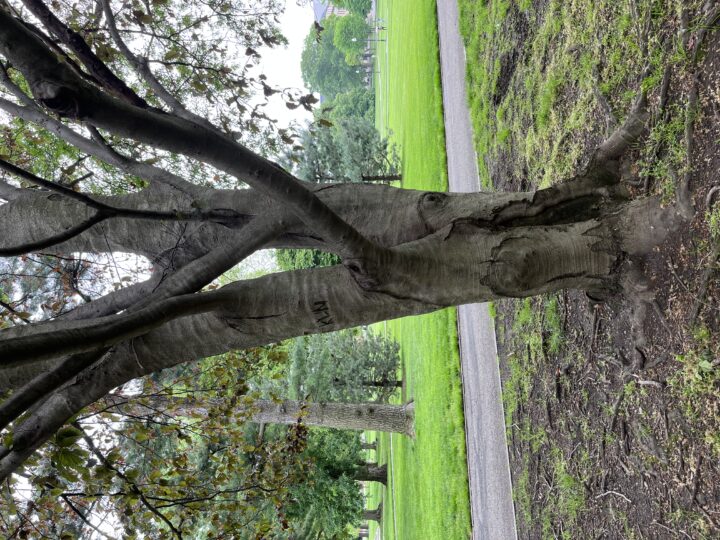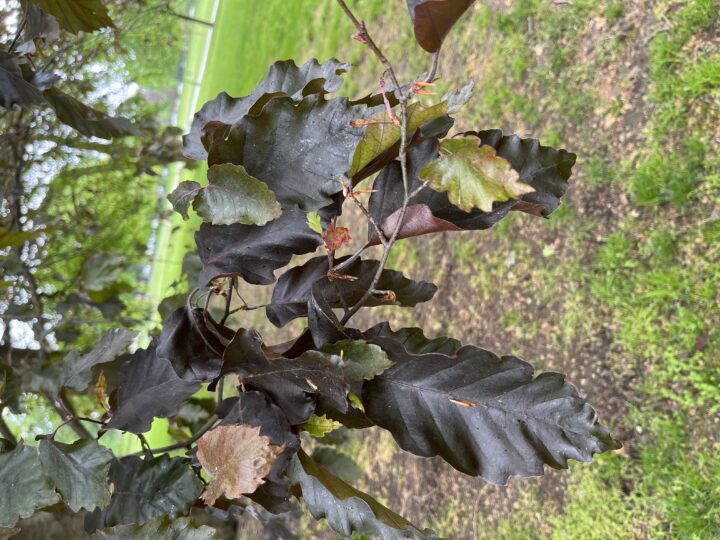Exploring the Trees of the Oval!
To begin curing my tree blindness, I visited the well-traveled Oval of The Ohio State University to identify some trees! Despite the rain, I enjoyed my visit, and I look forward to the day that I can point out the trees I’ve identified to my friends and peers as we walk across campus!
In an article published by The New York Times, author Gabriel Popkin describes a “condition” called tree blindness—the inability to describe or identify the simple trees we see everyday! Though many people suffer from tree blindness, Popkin encourages readers that they can cure their blindness simply by understanding what leaf and branch arrangements mean and learning a few of the most abundant tree species. Popkin also explains how useful it is to know trees—from understanding how our environment is functioning to identifying edible fruit.
In just one week of taking EEOB 2210, I’ve quickly started to catch onto the basics of tree identification and am slowly being cured of tree blindness! The first couple of trees that I identified belonged to genera that we had previously covered in class—Quercus (Oak) and Acer (Maple)! The next six trees all belonged to new genera that we hadn’t covered in class yet. All eight trees were found on the Oval which is comprised of soil that offers lots of minerals including limestone.
The tree below is a Swamp Oak—Quercus bicolor. Oak leaves are alternate in arrangement, simple in complexity, and lobed. This specific tree has leaves with 4-6 large, rounded “teeth.” The bark is light gray and flaky, and the tree generally stands 60′-70′ tall. Its fruits are acorns which are bowl-shaped with stalks that are longer than its leafstalks.
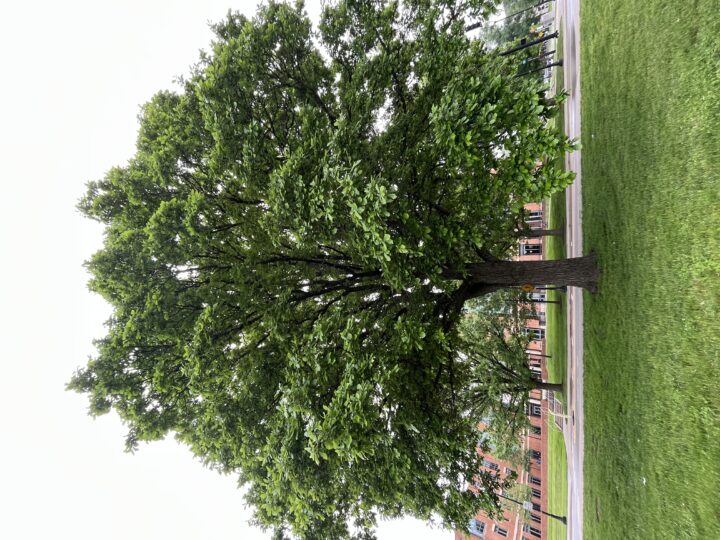
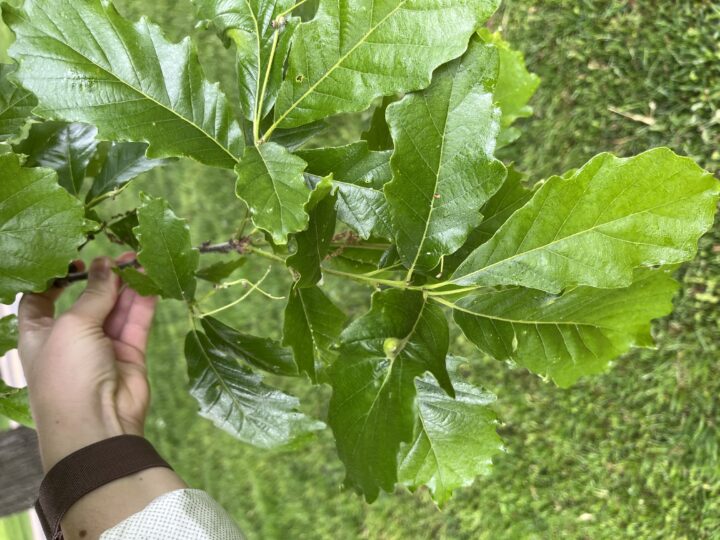
The tree below is a Red Maple—Acer rubrum. Maple leaves are opposite in arrangement, simple in complexity, and lobed. The twigs and buds are reddish in color. Maples stand 20′-40′ in height. According to Peterson’s Field Guide, Red Maple is sometimes used to make furniture. 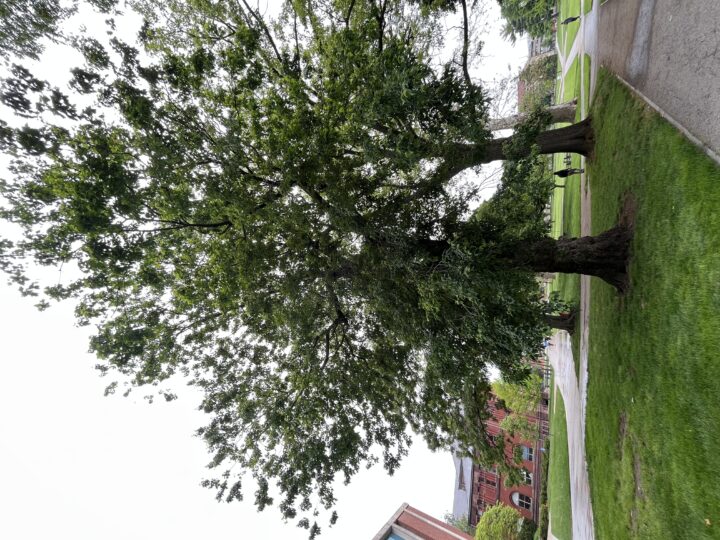
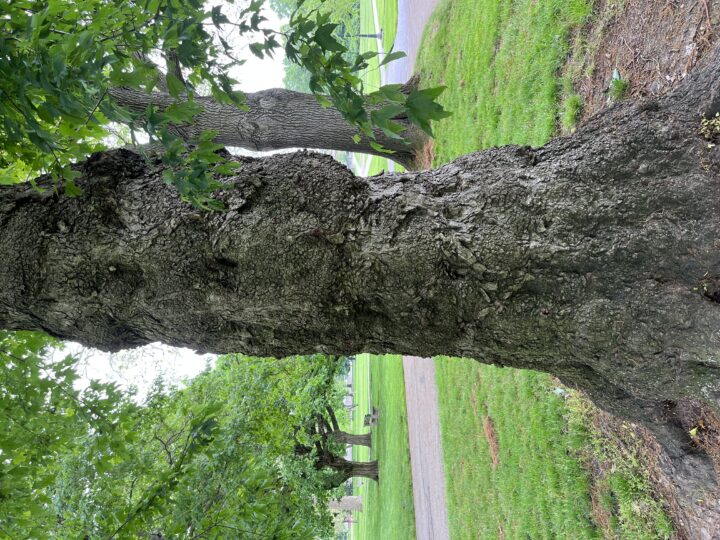

The tree below is an American Basswood—Tilia americana. Basswood leaves are alternate in arrangement, simple in complexity, and serrate. The leaves are somewhat heart-shaped, and the fruits are small nutlets that have leafy wings that act as spinning parachutes. American Basswood has hairless leaves and hairless flower stalks. Basswoods stand 50′-80′ in height with dark bark. According to Peterson’s Field Guide, the inner bark is tough enough to be twisted into cords, mats, and lines. 
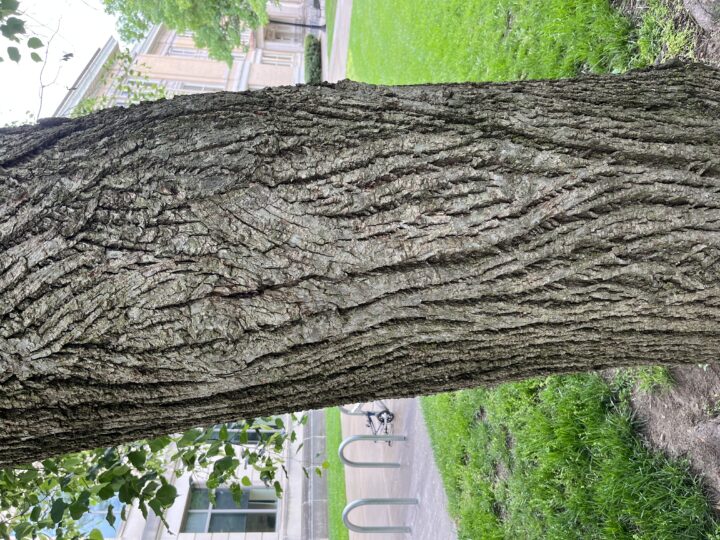
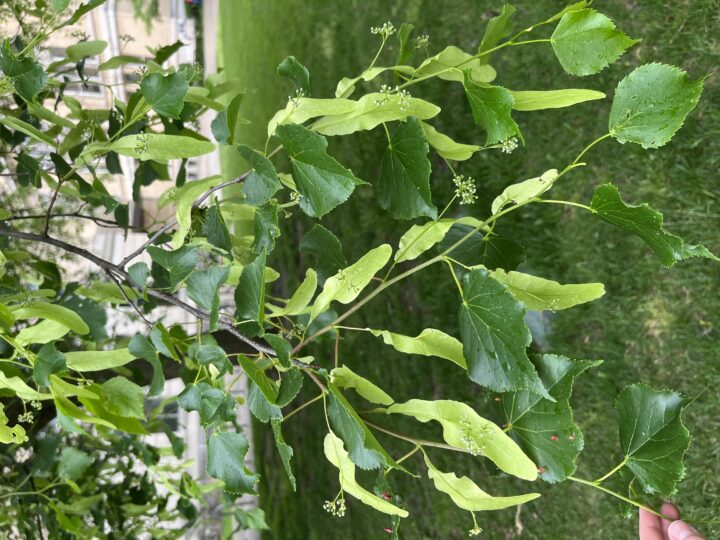
The tree below is a Cucumber Magnolia—Magnolia acuminata. Magnolia leaves are alternate in arrangement, simple in complexity, and entire. The pith is not chambered, the buds are hairy, and the fruits are dark red and cucumberlike when young. Cucumber Magnolias stand 40′-70′ in height. According to Peterson’s Field Guide, Cucumber Magnolias produce wood of commercial value for interiors, cabinetmaking, and woodenware.

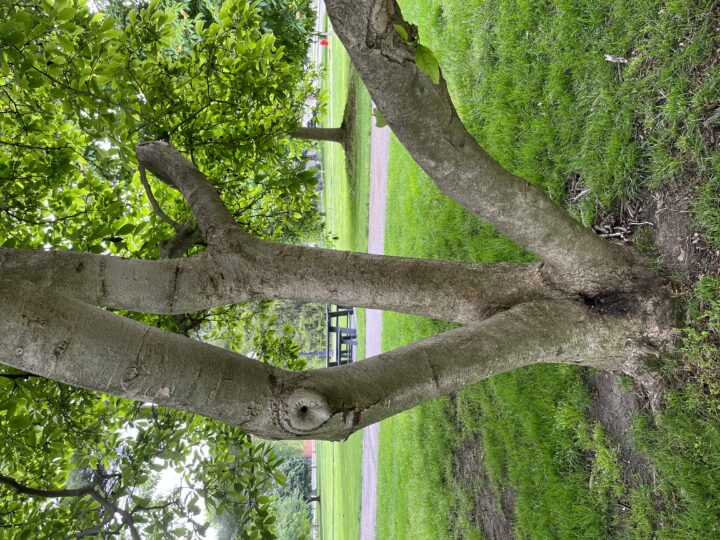
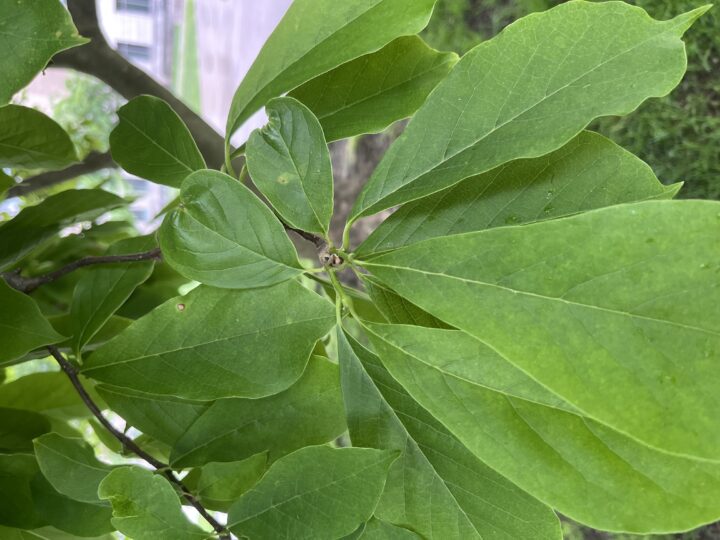
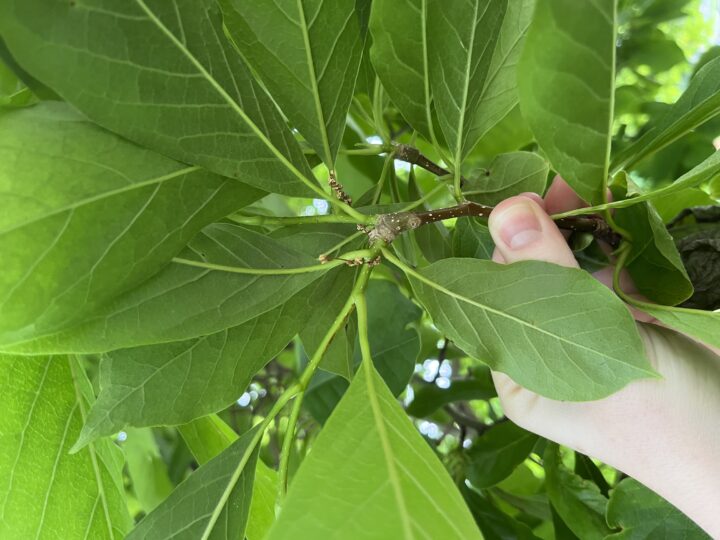
The tree below is an American Hackberry—Celtis occidentalis. Hackberry leaves are alternate in arrangement, simple in complexity, serrate, and uneven at the base. The pith is generally chambered. Hackberries produce 1-seeded fruit that are eaten by many birds including chickens, pheasants, and wild turkey. The American Hackberry stands 20′-70′ in height. According to Peterson’s Field Guide, the wood is of commercial value.
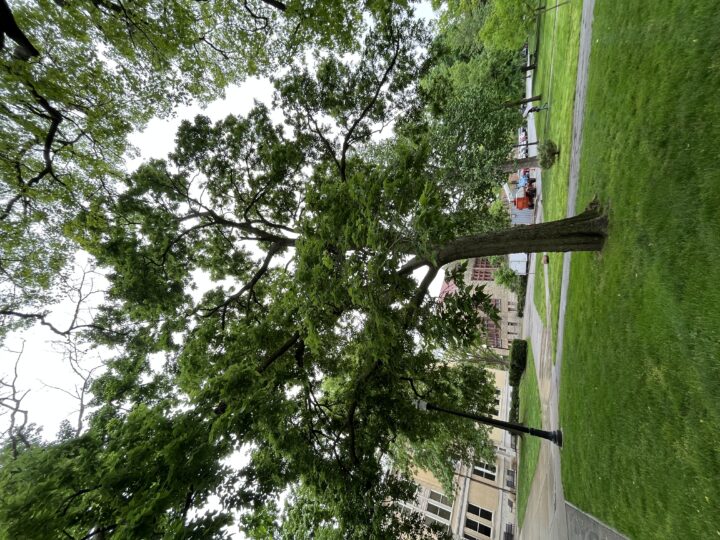
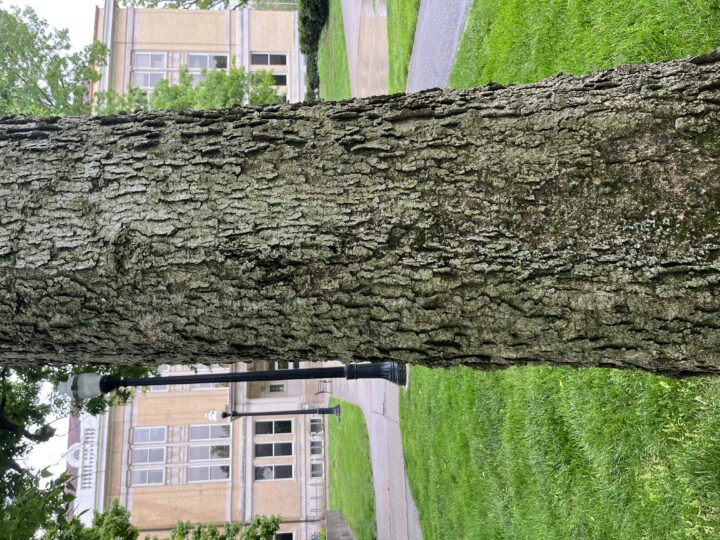
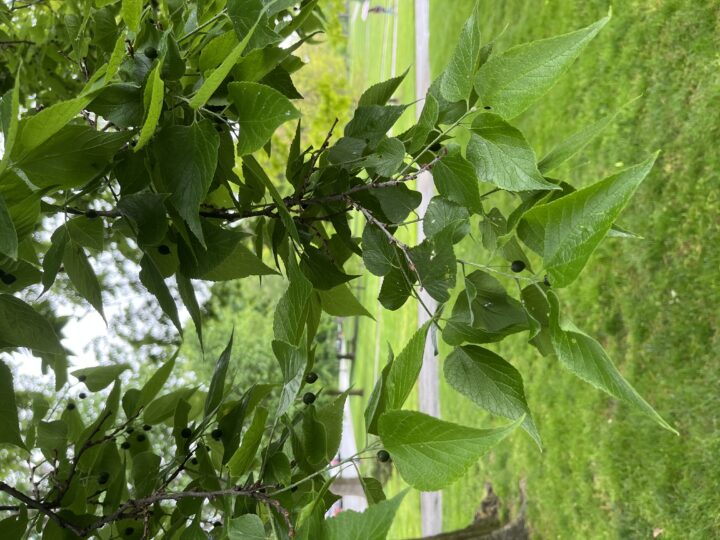

The tree below is an American Hornbeam—Ostrya virginiana. Hornbeam leaves are alternate in arrangement, simple in complexity, and double serrate. The buds are round in cross-section. Hornbeam catkins are usually present during the winter. Hornbeams stand 20′-30′ in height. According to Peterson’s Field Guide, Hornbeams and other similar European trees were originally used in yoking oxen, giving them the name Hornbeams or Yoke-elms.
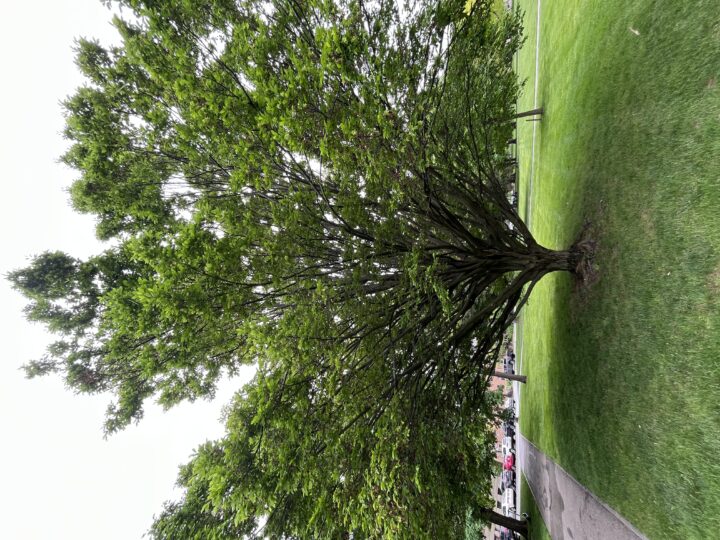
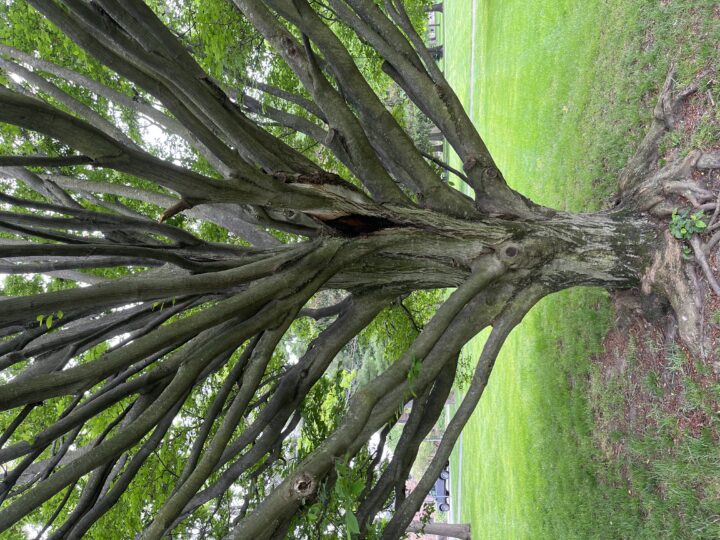
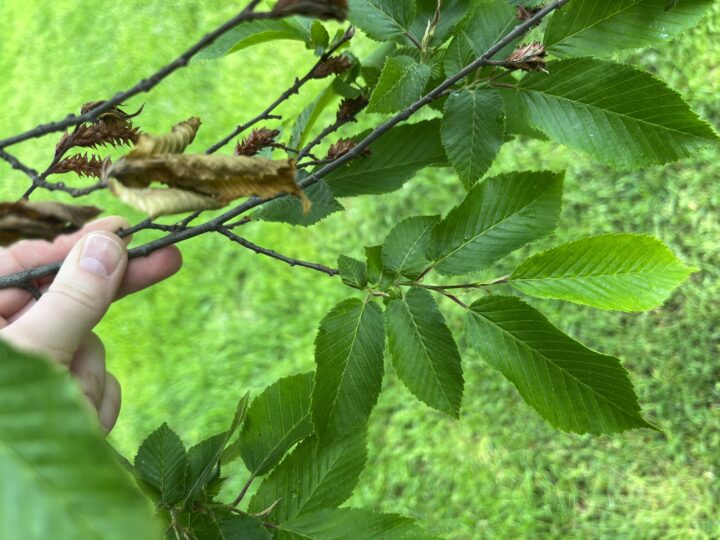
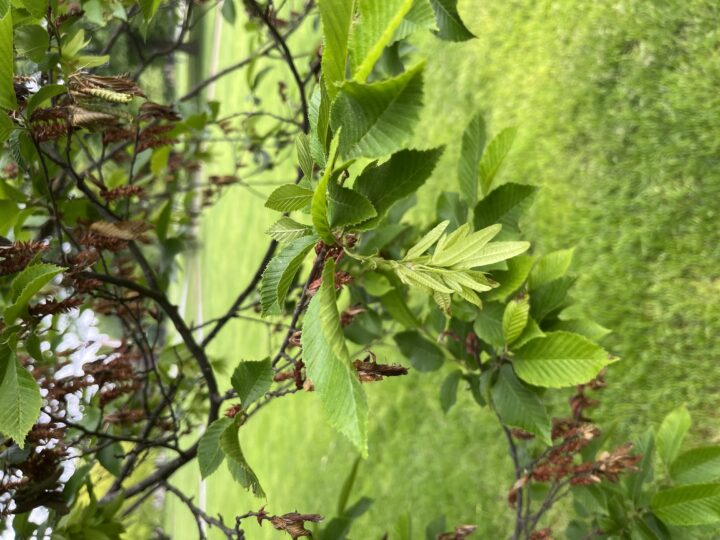
The tree below is an Osage-orange—Macular pomifera. Osage-orange leaves are alternate in arrangement, simple in complexity, and entire. They have strong thorns at each leaf scar. The sap is milky and causes irritation on some people’s skin. The bark is orange-brown. Osage-orange also oftentimes has spur branches of clustered leaves. The fruit is green and the size of grapefruits. Osage-orange trees stand 50′-60′ in height. According to Peterson’s Field Guide, Osage-orange trees were planted as living fences before barbed wire. It was used to make bows. Boiling the wood chips also produces a yellow dye because of the tannin in the bark.
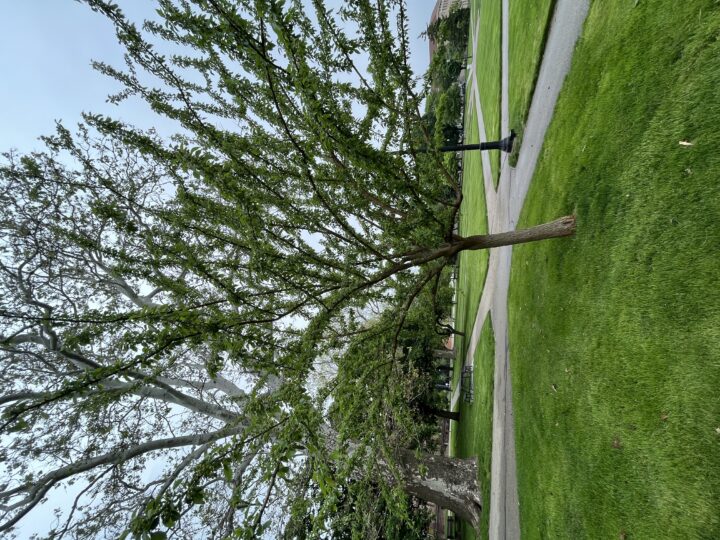



The tree below is a European Beech—Fagus grandifolia. Beech leaves are alternate in arrangement, simple in complexity, and entire. Beeches have distinct smooth gray bark with buds that are egg-shaped. The fruits are small, edible, triangular nuts. Beeches are 60′-80′ in height. According to Peterson’s Field Guide, the wood is used to make cheap furniture and tools. They are mostly planted for decorative purposes.
